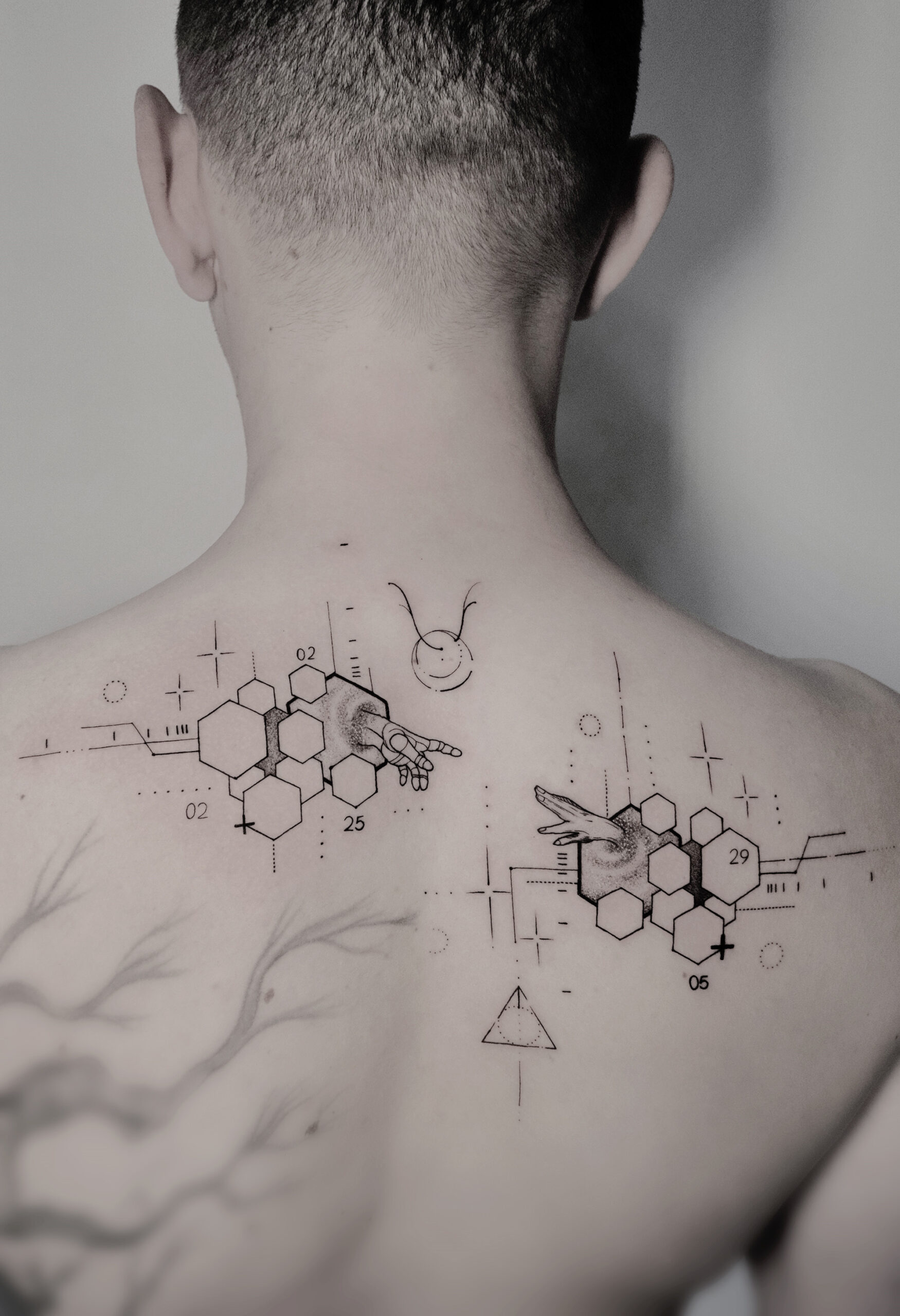
Mikhail Nechaev is based in Germany and frequently travels to tattoo guest spots across Europe. 2014 marked his graduation from a technical university with a degree in Electrical Equipment and Power Supply Engineering for Enterprises, Organizations, and Institutions. As a former executive chef of a high-end Japanese restaurant, he believed that becoming a tattoo artist would enable him to offer clients more than just a gratifying meal. His art would have a lasting effect if imprinted on human bodies, followed by a bonding experience with each individual. In 2017, Mikhail Nechaev became a professional tattoo artist; his work focuses on scientific and spiritual themes; he also appreciates the works of great painters from the past (Da Vinci to Magritte) and applies his history knowledge to better his art.
The rendition of Michelangelo’s “The Creation of Adam” by Mikhail Nechaev.
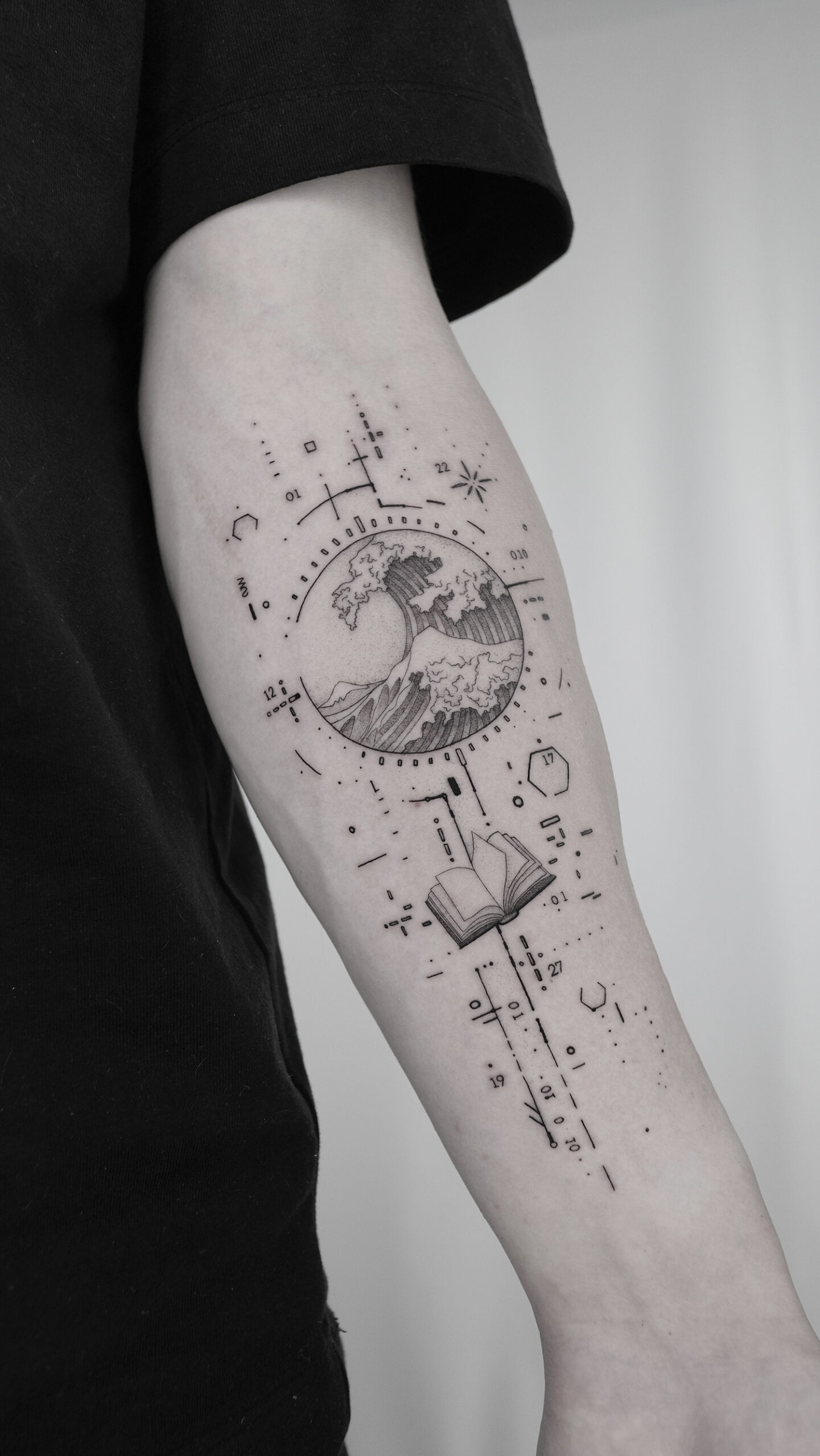
Nechaev is inspired by the Edo-period artist Katsushika Hokusai.
Did you work in other fields before becoming a tattooer?
Before embarking on my journey as a tattoo artist, I worked as a graphic designer in a small printing house, creating designs for outdoor advertising and handling book design and printing. I also had experience as a head chef in a Japanese cuisine restaurant.
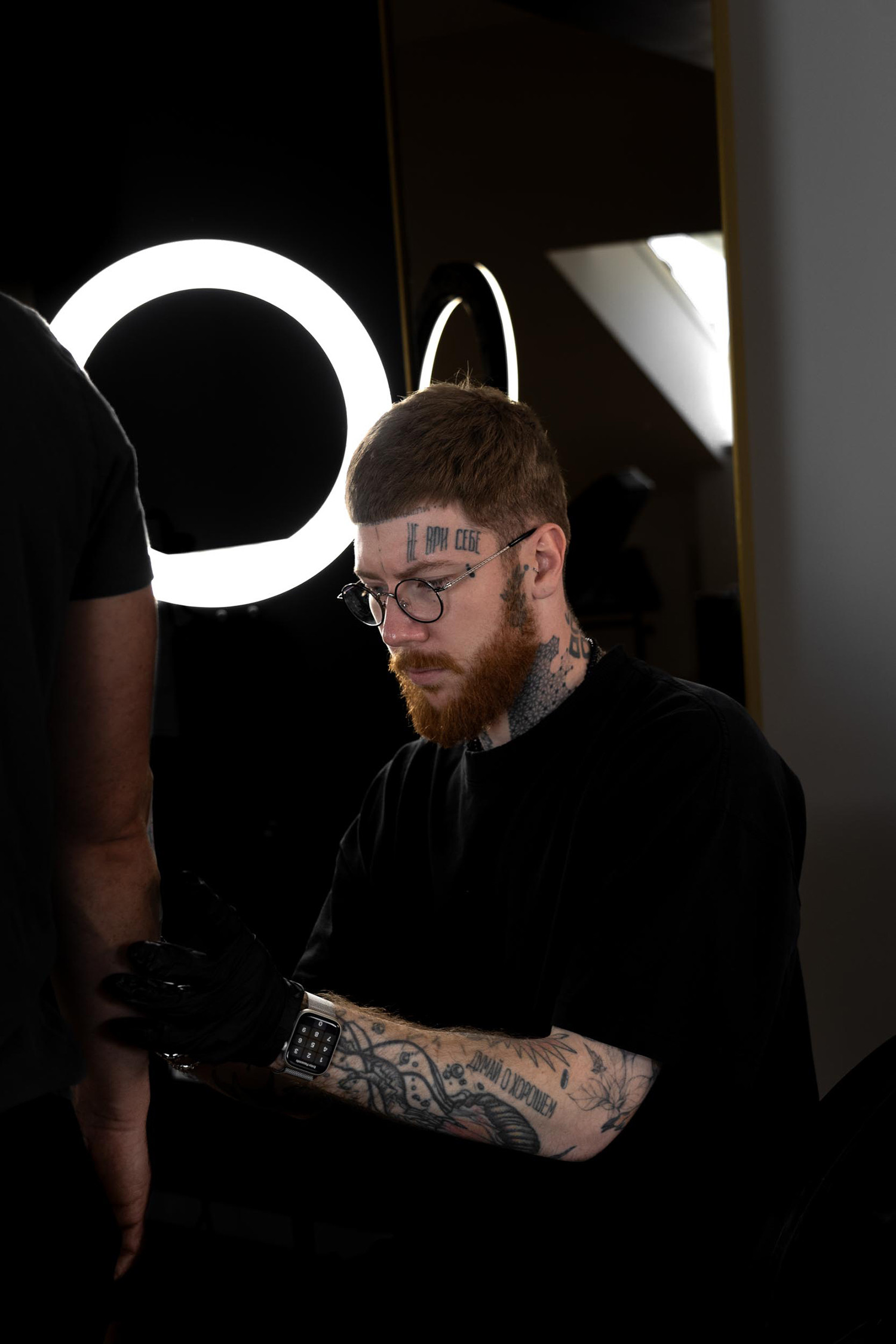
Mikhail Nechaev, a German-based tattooer, is methodical and meticulous.
Why did you leave a career as a chef?
After five years of continuous work in the kitchen, I grew weary and somewhat disillusioned with the industry. I yearned to create something beautiful and long-lasting that people would cherish beyond just one splendid evening in a restaurant. The monotonous nature of restaurant work lacked the fulfillment I sought.
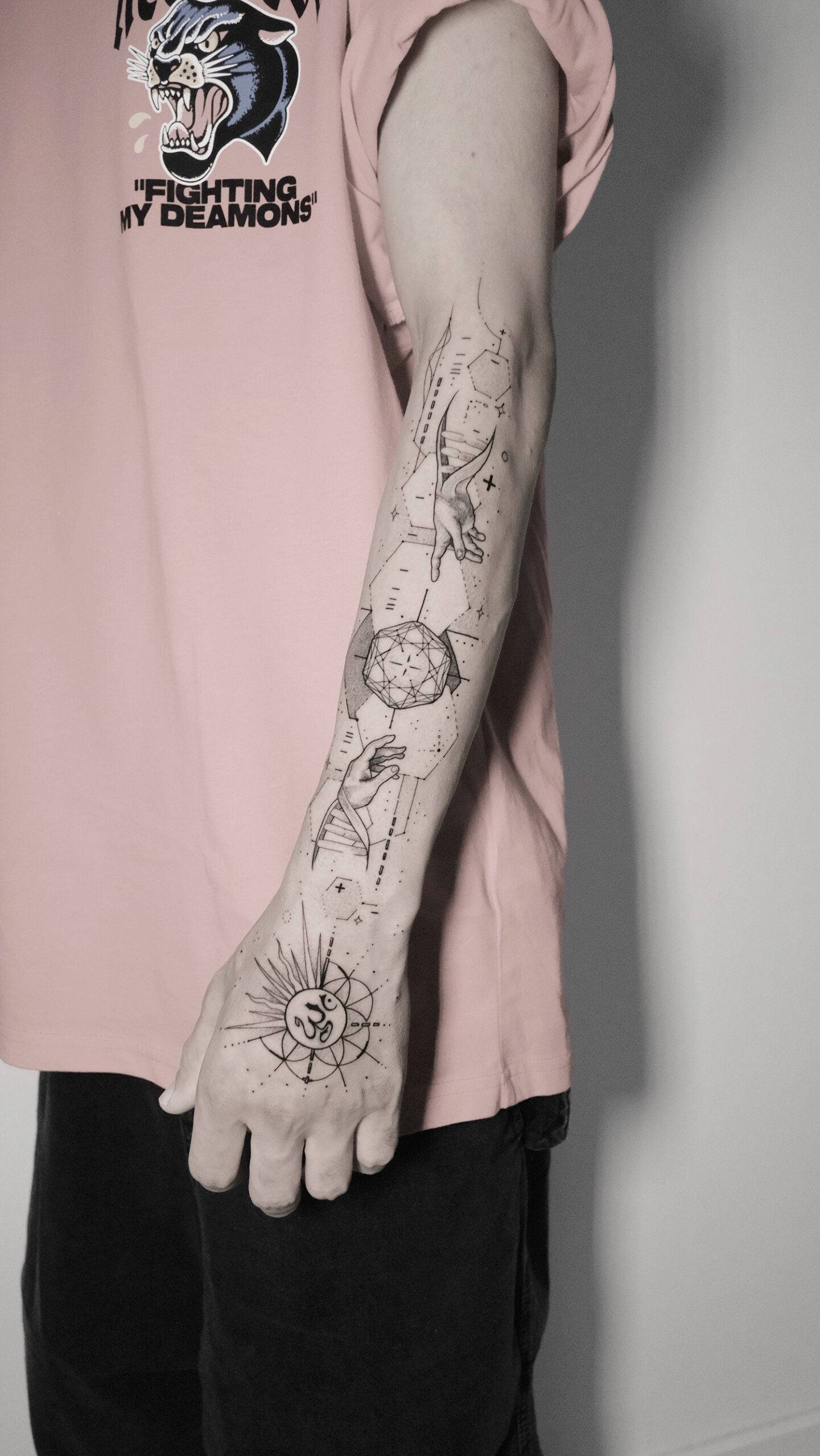
The artist makes it abundantly apparent that we are more than our corporeal forms; we are energy.
You mentioned that a tattooer could be partially a “psychologist” helping clients with their emotions and journey. Please explain more about the need for a positive and healthy tattoo environment.
I do believe it’s true. A tattoo artist needs to have a strong sense of empathy and excellent communication skills. Listening to and gently guiding clients to help them realize their ideas effectively is essential. Each client desires a unique piece of art that somehow reflects their individuality. A good tattooist should be attuned to their client’s psychological state, find the right approach to explain their creative vision, and alleviate any fears or concerns related to the tattooing process. It’s natural for clients to feel nervous during the session, and a skilled tattoo artist can calm and distract them, focusing on positive emotions and memories to make the experience more comfortable and enjoyable for the client.
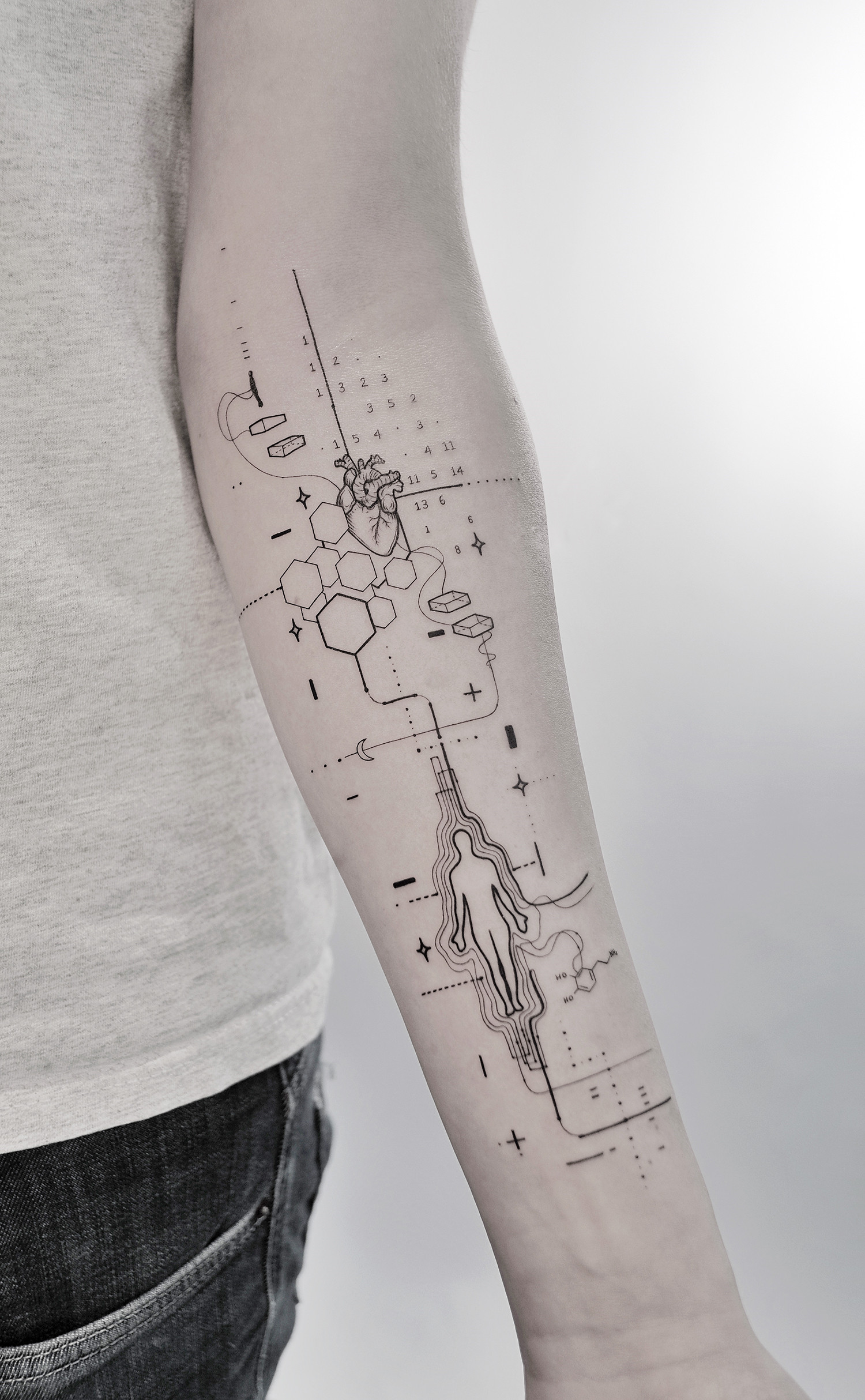
Nechaev reminds us, through the use of a fine-line technique, of the interconnectedness of the universe.
What exactly can a client anticipate from a tattoo session with you?
So often in life, we encounter situations where our ideas are misunderstood, judged, or attempted to fit into conventional frames. I must understand and accept that every client has a vision and attitude toward their body and its beauty. People have rules and principles they want to manifest through art by modifying their bodies. I’m more than happy to help bring a client’s idea to life in a unique form. Every idea is a memory, or a dream of the client etched on their skin—a sort of talisman that can psychologically help the client navigate complex life situations, commemorate important moments, or give strength to achieve future goals. Tattooing is about self-identification, self-acceptance, and the opportunity to stand out. I firmly believe that a tattoo helps people explore themselves and understand themselves better.
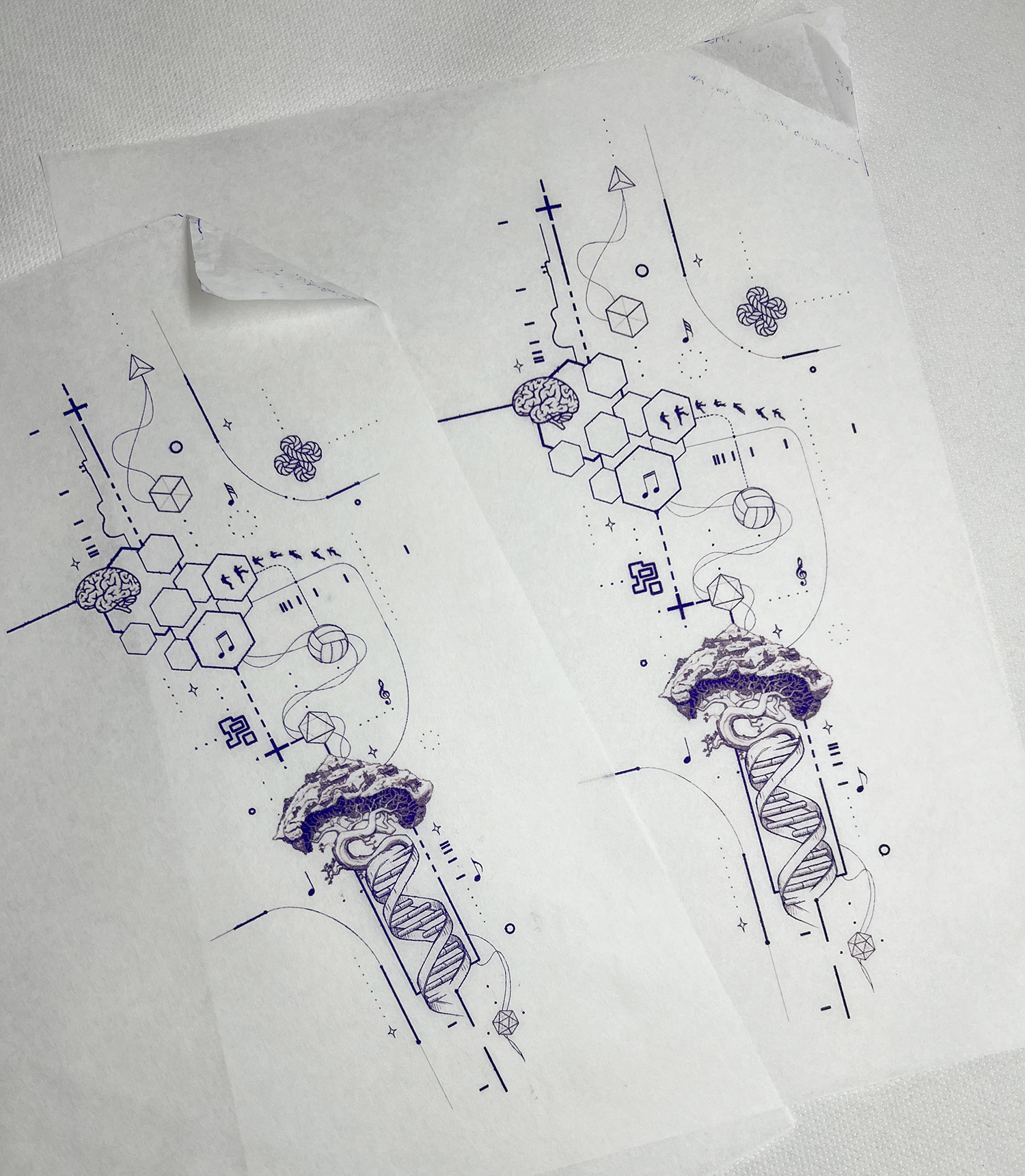
A close-up of his stencil work before it is applied to the the skin.
There is a sense of the universe, perhaps cosmic connection, in the themes of your work, as if you are on the verge of deciphering the universe’s code to assist your clients.
Given my engineering background, everything around us, including ourselves, is made of energy. The law of energy conservation in our universe is fundamental, where energy never disappears but continually transforms and transitions from one form to another. As such, I utilize any sources that help me fully actualize this truth: science, astronomy, esoterica, and shamanism. I don’t want to be fixated on a singular viewpoint. Therefore, I assist my clients in unraveling their personal “universe code,” imprinting it onto their skin, and they often thank me because my creativity subsequently transformed their lives. In part, that’s my mission.
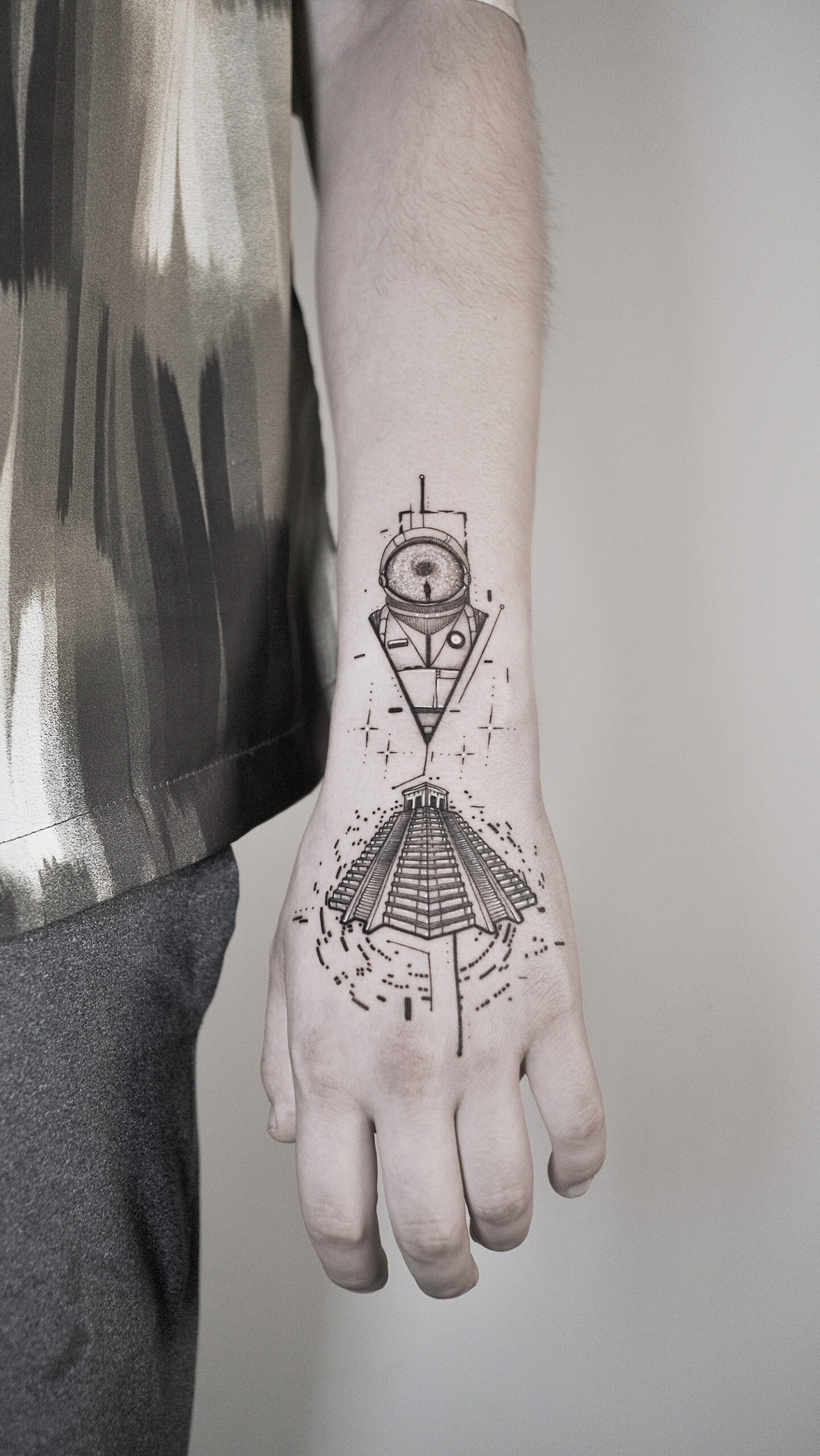
We are challenged to determine what the ancient Mayan ruin of Chichen Itza relates to astronauts.
Kindly elaborate on your tattooing style.
In my work, I frequently use the finest configuration of liner needles, allowing me to play with contrasts between thin and thick lines. Although I’m always open to experimentation, I prefer a tattooing technique that ensures sharp, non-gradient lines during healing. For shading, I often employ dotwork, using the (auto) dot technique, which involves layering dots at a low voltage on the tattoo machine. My conceptual approach tends to create designs with an airy and spacious feel, leaving some areas of the skin without densely packed objects. I can give the tattoo a sense of depth and dimension by emphasizing geometric shapes or objects with shadows. My tattoo style has evolved, fueled by my passion for geometric forms. I continually explore themes related to the universe, human connections, nature, and the technosphere. Delving into humanity’s place in the universe and topics like numerology, astronomy, and symbolism intrigue me.
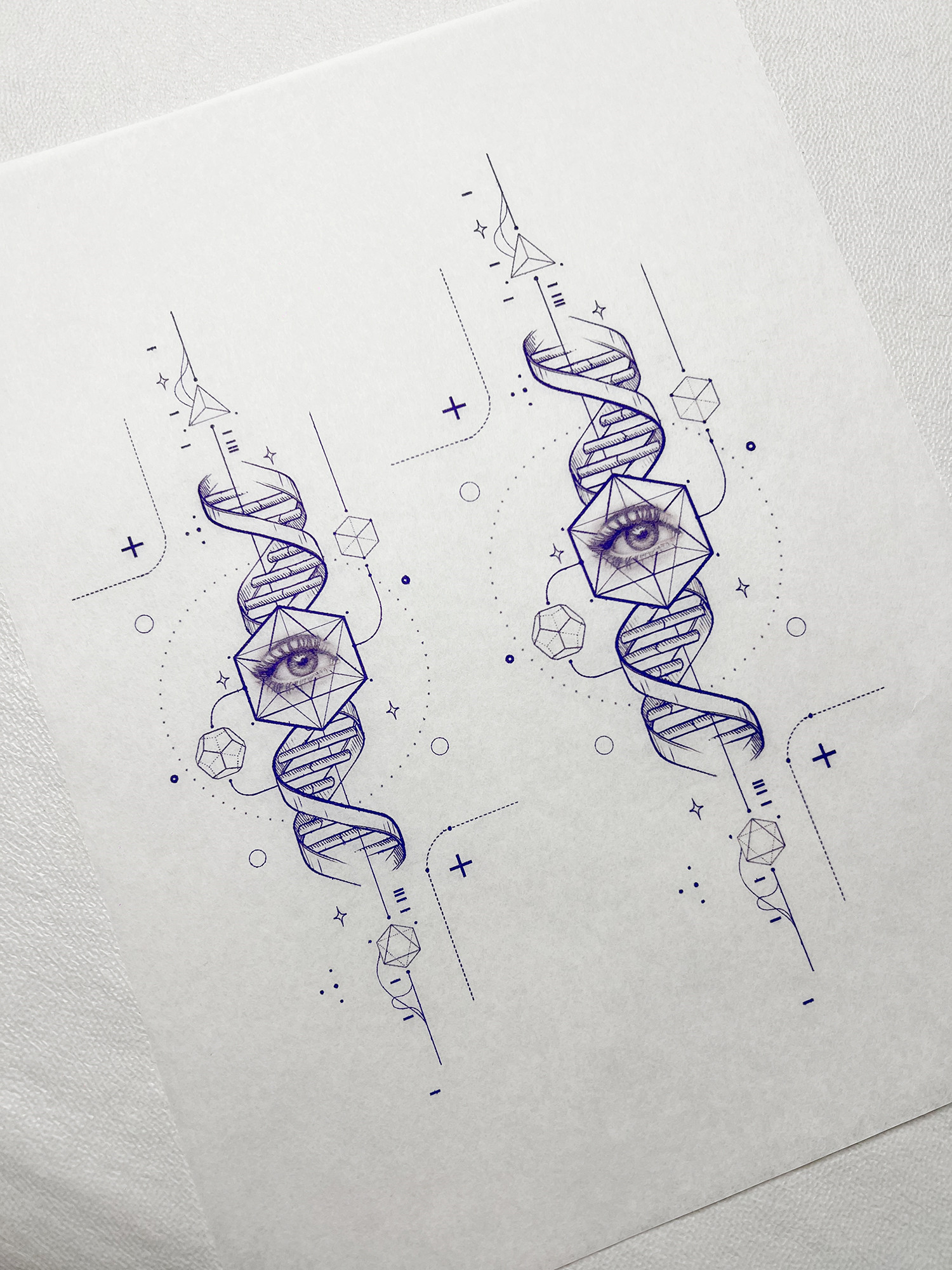
More DNA, universal code sketches.
You say, “I prefer a tattooing technique that ensures sharp, non-gradient lines during healing.” Does this contribute to the durability of a tattoo, or is it merely a matter of aesthetics?
Yes, this is a matter of tattoo longevity and how the tattoo will look in the future. Thanks to my years of experience, I’ve observed tattoos over 5-7 years old to understand how different pigment application methods under the skin affect the quality of the tattoo over time. Indeed, we must acknowledge that we age, and our skin ages with us. It loses its elasticity and is subjected to external factors such as ultraviolet radiation. Suppose the pigment is initially applied at the correct depth, and a moisturizing and sun protection cream is regularly used afterward; in that case, you can achieve minimal loss in your tattoo quality over the years. This has become possible thanks to new high-tech inks, non-traumatic next-generation tattoo machines, and many years of professional tattoo artist application experience. Different skin types and exceptions exist, and knowing how to work correctly with each one is essential.
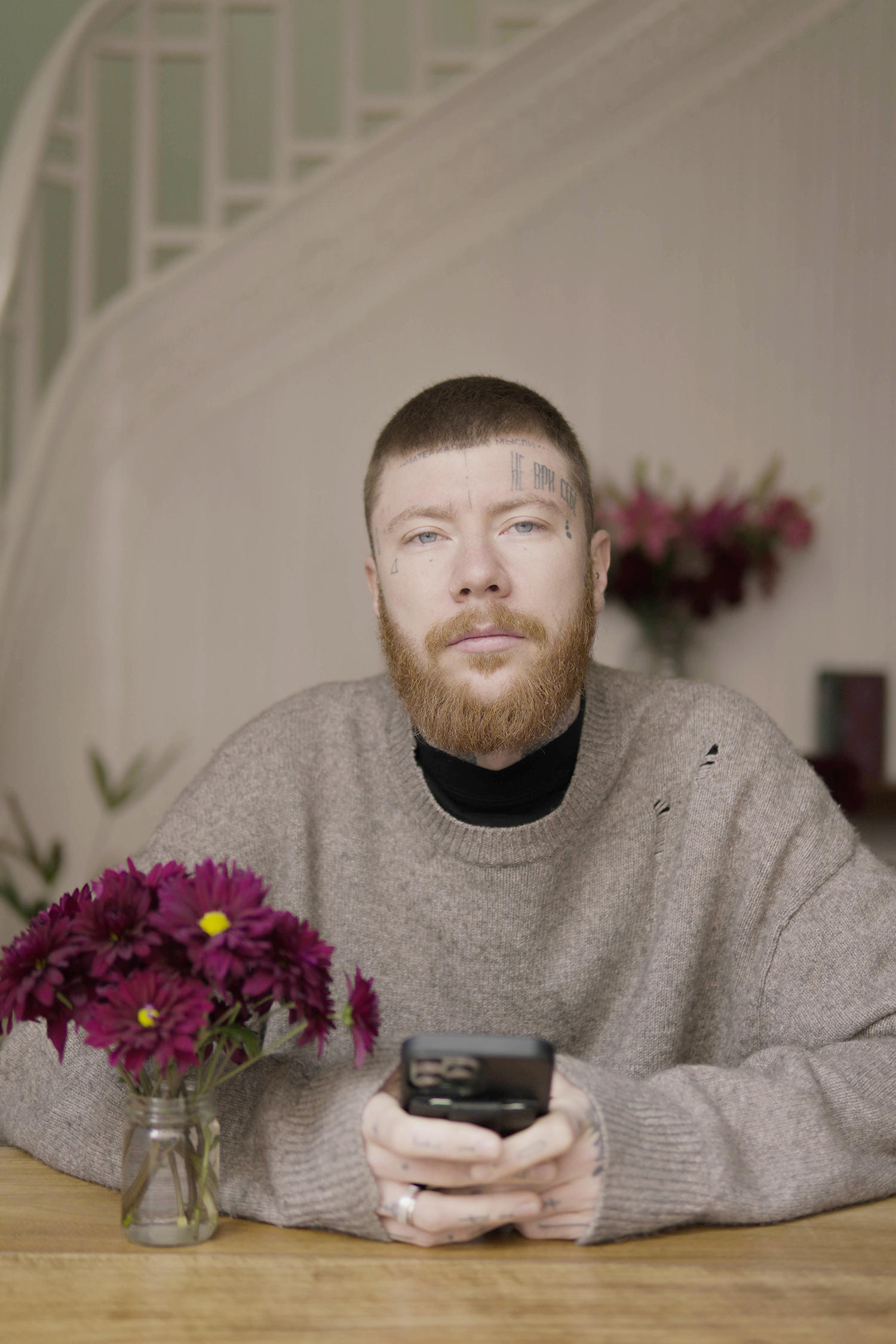
A portrait of the artist Nechaev.
How has architecture influenced your work?
Architecture has been a profound source of inspiration for me for many years. Exploring buildings from various eras helps me discover new forms for my work. I sincerely appreciate modern architects who find innovative ways to partially renovate old structures, merging contemporary architectural solutions with historical designs. I sometimes sketch specific building shapes to incorporate them into my tattoo designs. I find great inspiration in bas-reliefs, old spiral staircases, and European Catholic churches—which captivates me.
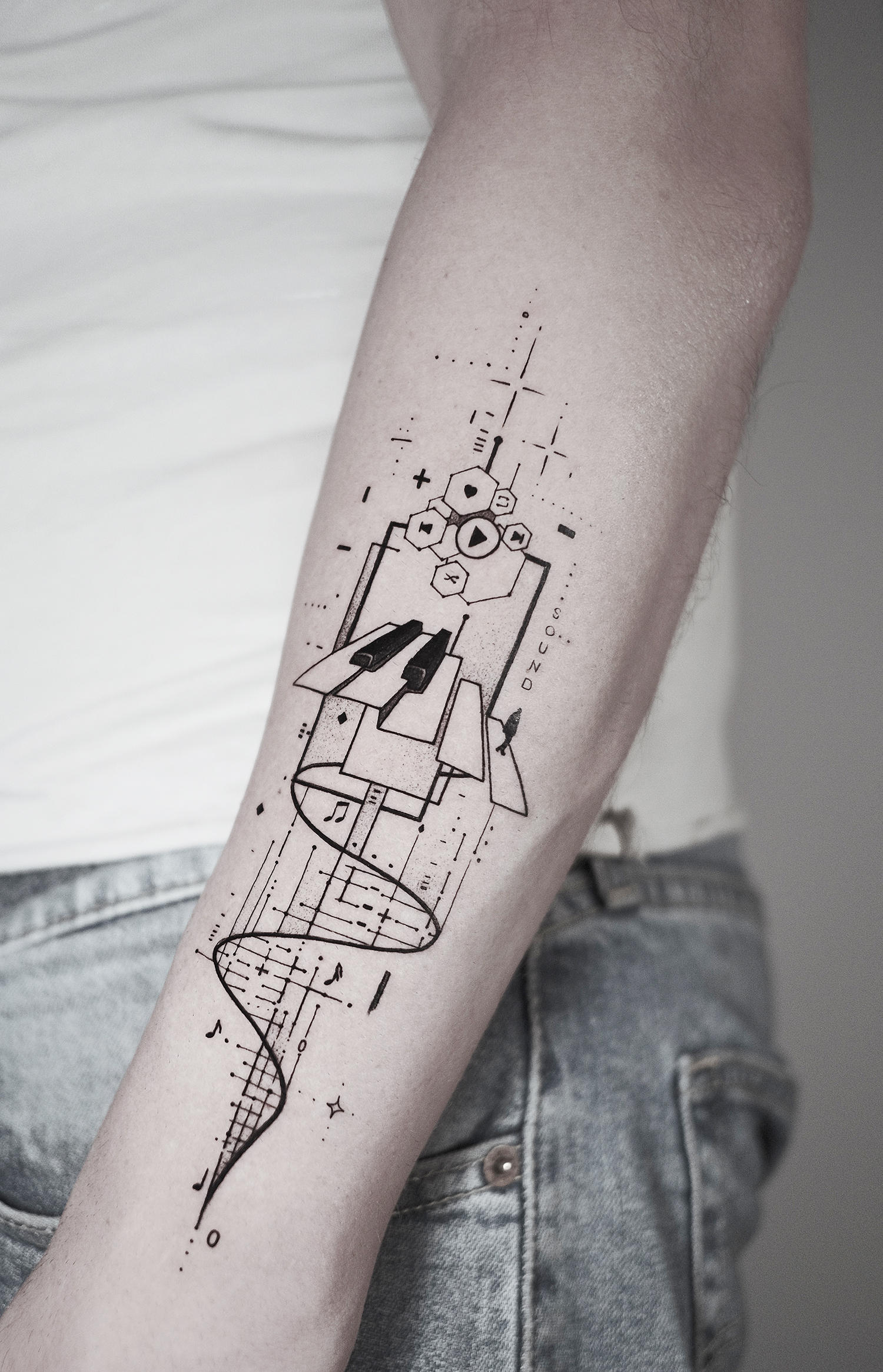
The benefit of art is that it is always open to interpretation.
Many of your artistic influences are also from great painters of past eras.
Studying the works of renowned artists from other fields allows tattooers to understand better composition, color theory, and various artistic techniques. We find inspiration in masterpieces created by Leonardo da Vinci, Pablo Picasso, Salvador Dali, Rene Magritte, and Frida Kahlo, to name just a few. Surrealists greatly inspire me. This understanding of art history enables tattooers to incorporate elements of classical art into their unique designs, blending traditional and modern styles. By drawing influence from past eras, we can create tattoos that reflect our client’s personal stories and pay homage to the rich artistic heritage that has shaped the art world. This fusion of influences fosters a diverse and ever-evolving tattoo culture that continues to push the boundaries of artistic self-expression. This sheds light on how tattooers can draw inspiration from the great artists of the past while infusing one’s contemporary style.
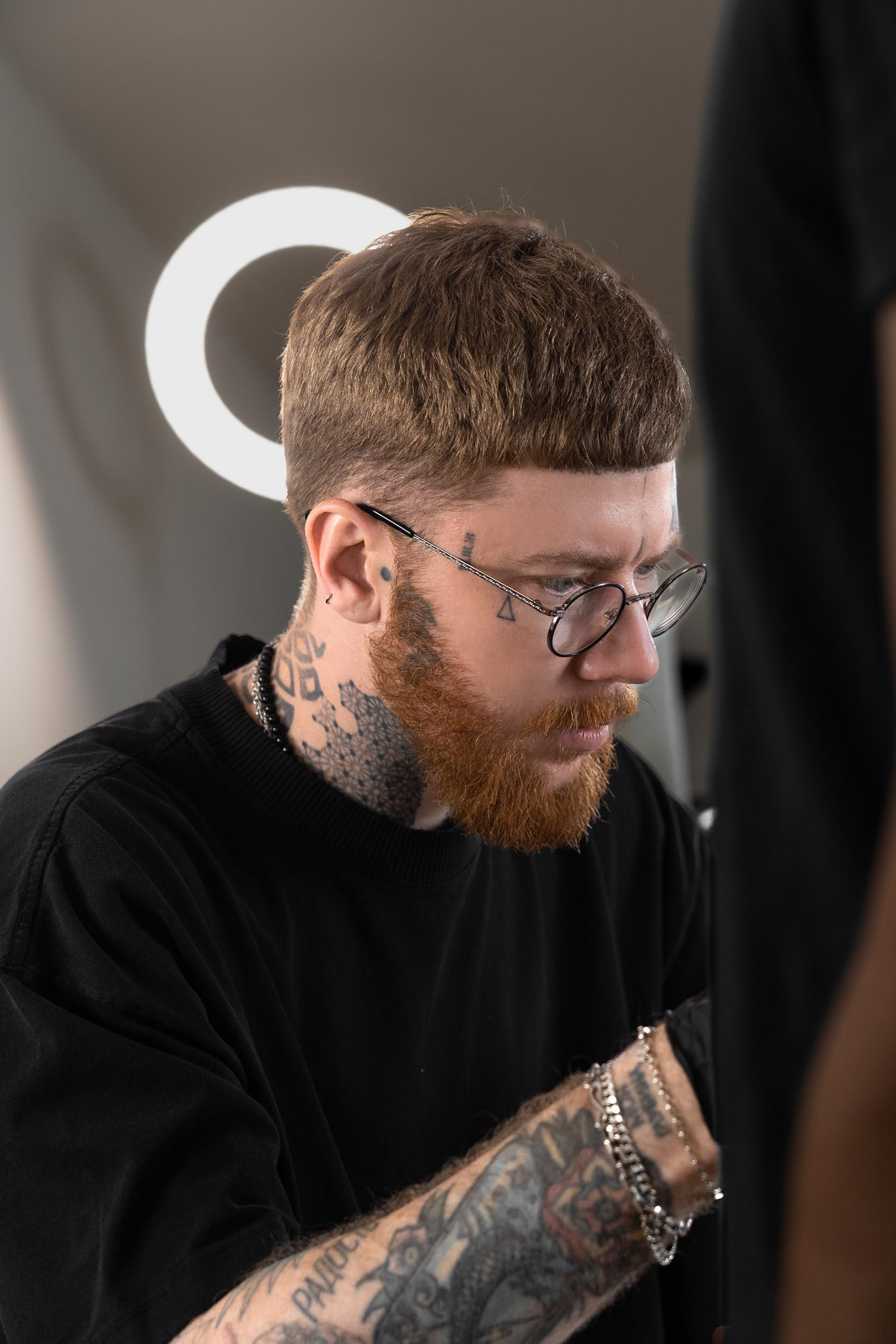
Nechaev is most at ease when he is tattooing.
Where have you guest spotted?
Over time, I’ve had the opportunity to visit some of the most exciting and modern studios across Europe. I began my travel to Germany, visiting Vaders.Dye in Berlin and Hamburg. I also had the privilege to work at Stuttgart’s highly popular studio, Mommy I’m Sorry, which now boasts over 500,000 followers. In addition, I guest-spotted at Pardonparis in Munich and Ink District Amsterdam in The Netherlands. Furthermore, I spent six months in Mexico, working at one of the most captivating shops, The Nomad Studio. This experience allowed me to exchange knowledge with talented Spanish-speaking artists from South America.
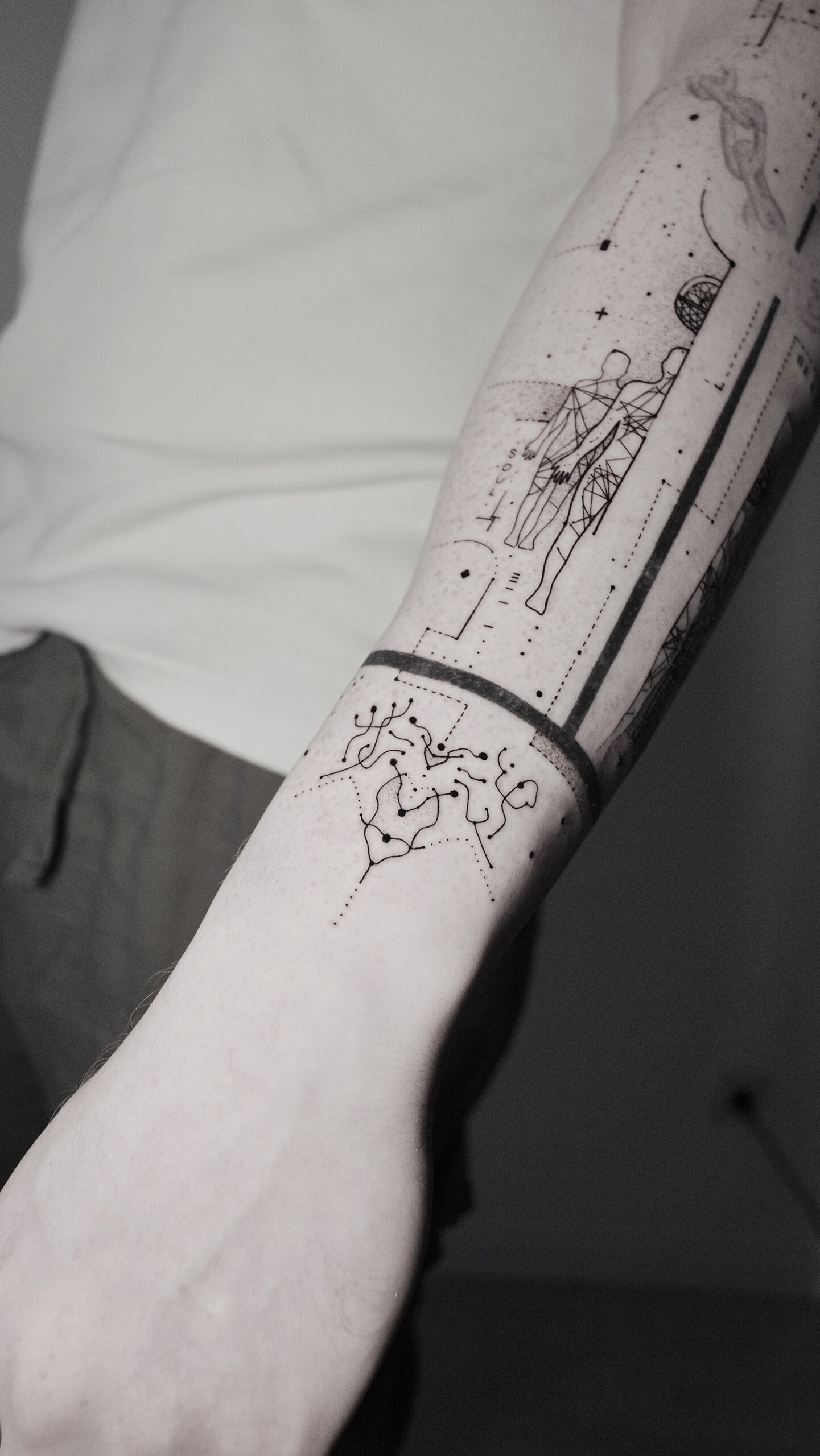
Souls, connection, and line art.
What are your plans for the future?
My plans are quite extensive at the moment. I have plans for several exhibitions in contemporary art galleries. I aim to delve into the world of tattoos, highlighting societal issues related to discrimination and showcasing the evolution of tattoo art over time. However, I won’t reveal all the secrets yet; you’ll get to see everything soon enough.
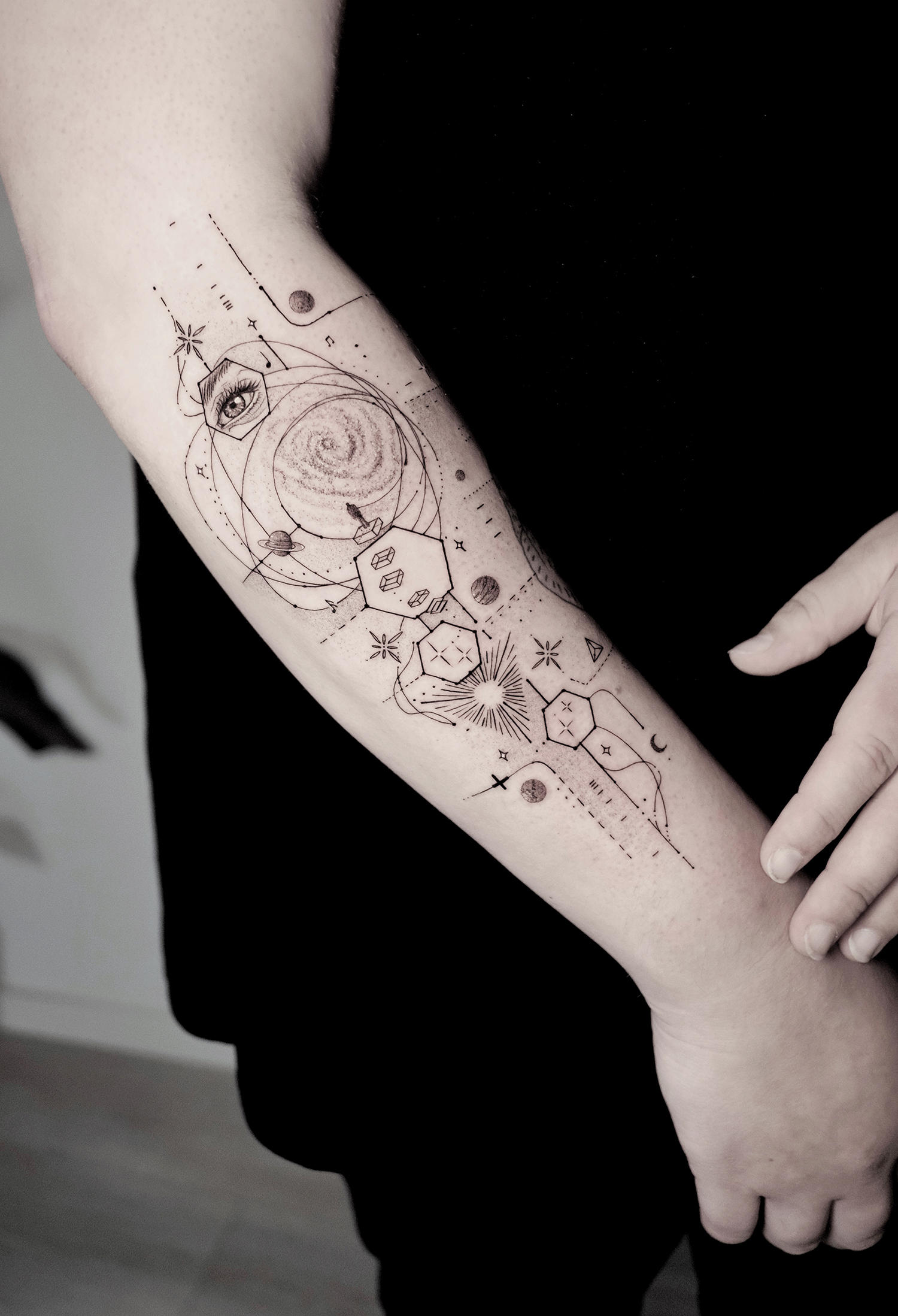
In tattoo form, the galaxy with planets and interstellar matter.
What societal issues and discrimination are you looking to shed light on?
The topic of tattoo art and society intrigues me. We live in a world where [some may think] tattoos are completely accepted, but that’s untrue. In many countries, people face discrimination from employers due to their tattoos or from ordinary individuals who perceive tattoos as immoral or unnatural when seen on others. Society doesn’t always accept people who want to express their vibrant individuality. One of my missions in this industry is to change public opinion.
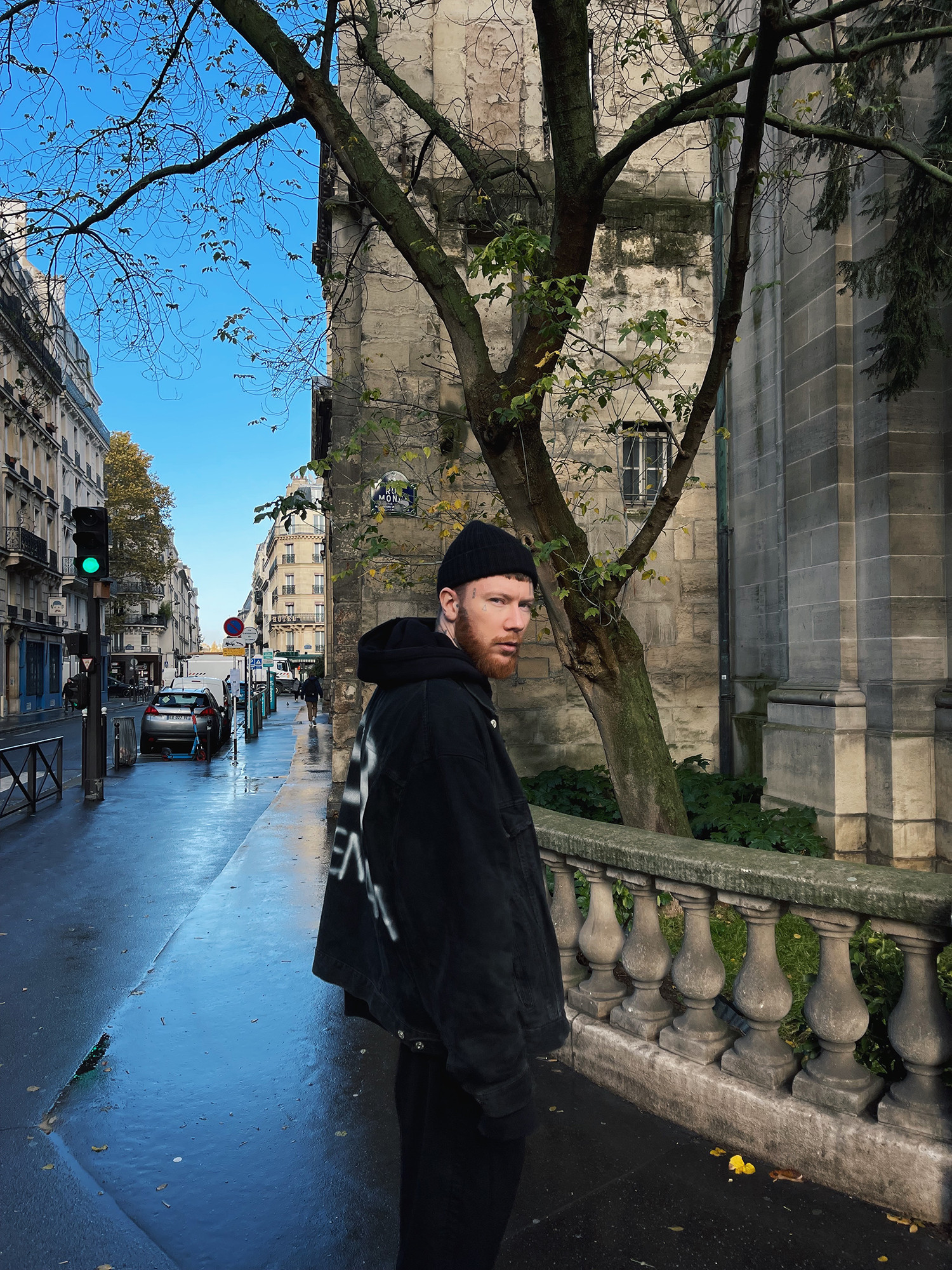
Photographed on a European street, tattoo artist Mikhail Nechaev.
“Showcasing the evolution of tattoo art over time.” What do you mean? From what period to another?
The evolution of tattoo art has occurred over many centuries and has been influenced by various factors. Here are some key points in the history of tattoo evolution:
1. Historical Roots: Tattoos have ancient origins and were often associated with rituals, ceremonies, and symbolism in different cultures. From ancient Egyptians and Celts to Polynesians and Japanese masters, tattoos served as a unique form of self-expression, denoting status, religious beliefs, tribal affiliation, and much more.
2. Technical Changes: Over time, tattooing techniques have improved. In the past, primitive tools like bones, sharp stones, and plants were used to inject pigments into the skin. However, with the advancement of modern technology, electric tattoo machines emerged, significantly enhancing the precision and efficiency of the process.
3. Cultural Influences: Migration, globalization, and cultural exchange have contributed to the diversity of tattoo styles and techniques. Various cultures and tattoo art worldwide have influenced each other, inspiring new ideas and approaches.
4. Artistic Development: Alongside the evolution of the tattooing process, tattoos have been recognized as art. Many tattoo artists have developed their skills and styles, creating unique and intricate designs. Today, tattoos can be genuine works of art, combining different styles, techniques, and themes.
5. Social Changes: The shift from tattoos being associated with crime and deviance to broader recognition and acceptance in society has also contributed to the evolution of tattoo art. Today, many people choose tattoos as a form of self-expression, a reminder of significant events, or simply a way to decorate their bodies.
Overall, tattoo art’s evolution has resulted from historical, technical, cultural, and social changes. It continues in our time as more people explore new styles, techniques, and ideas, making tattoos even more diverse and intriguing.
Photos © Mikhail Nechaev
